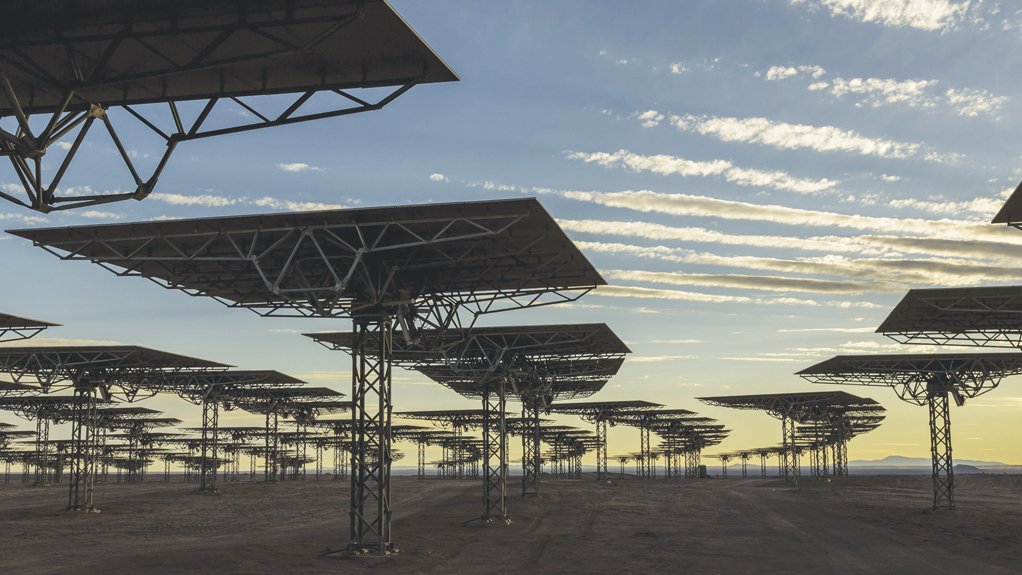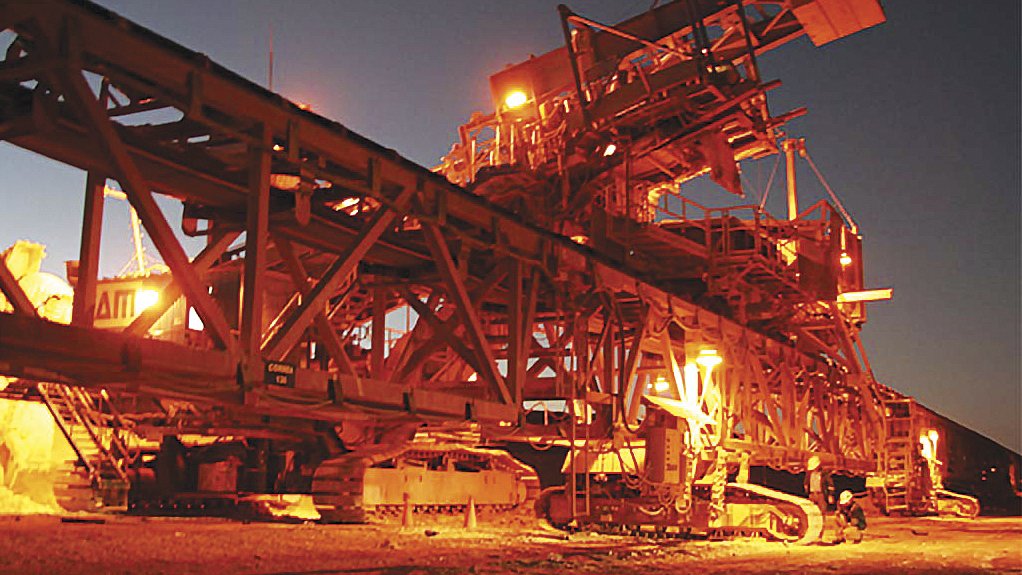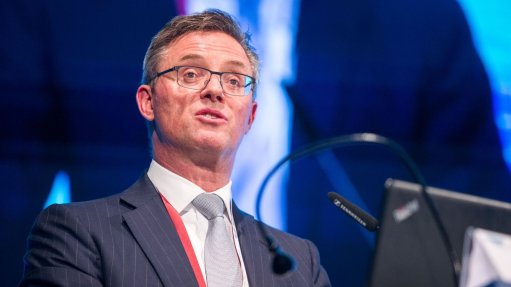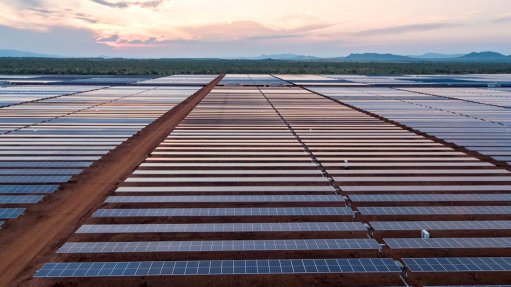Chile govt, industry team up to make mining enviro friendly through an energy revolution





GIGANTIC OPPORTUNITY Solar power panels in the Atacama desert at sunset
Photo by Bloomberg
LEADING THE WAY: Antofagasta's Zalidivar mine will be the first in South America to be entirely powered by renewable energy
Photo by Antofagasta
LEADING THE WAY Antofagasta’s Zalidivar mine will be the first in South America to be entirely powered by renewable energy
Photo by Antofagasta
Both government and the mining industry of the South American country of Chile are determined to make the country a world leader and global ‘reference point’, or example, regarding sustainable, or green, mining, in particular, and clean, or green, technologies, in general.
These interrelated initiatives, which are all public–private partnerships (PPPs), are being driven by the policy of current Chilean President Sebastián Piñera, who is a centre-right politician and formerly a highly successful businessperson. This policy aims to develop a mining industry that is environmentally sustainable and socially inclusive. (Piñera, who was re-elected last year, previously served as the country’s President from 2010 to 2014. Chilean Presidents have four-year terms and may not stand for immediate re-election after the end of their term in office.)
Chile is currently the world’s top producer of copper, iodine, molybdenum and rhenium. It is also the world’s second-most-important producer of lithium. Mining is responsible for some 10% of the country’s gross domestic product (which amounted to about $270-billion in 2017), while copper, on its own, accounts for about 50% of Chilean exports. Most of the country’s mineral reserves and mining operations are concentrated in the north of the country, in the Antofagasta and Atacama regions, both of which are extremely arid, as they cover most of the Atacama desert, which is the driest nonpolar desert on earth.
The latest step in implementing this policy took place at the end of July, namely the launch, presided over by Chile’s then Undersecretary of Mining (equivalent to Deputy Minister in South Africa), Pablo Terrazas, of the Roundtable (literally, the Working Table) of Green Mining. This is a PPP involving the country’s Mining Council, the National Mining Society, the Chilean Copper Commission and the Centre for Copper and Mining Studies, and supported by the Alta Ley Corporation.
The Alta Ley Corporation (Alta Ley literally translates as ‘High Law’) is itself a PPP, created out of the Alta Ley National Mining Programme, which was set up (again as a PPP) in 2015 to focus on the challenges of safety, productivity and environmental protection facing the country’s mining sector, and to create, strengthen and energise the mining innovation ecosystem. Last year, to better fulfil the policy enunciated by Piñera, the Alta Ley Programme was merged with the country’s Mining and Metallurgy Research Centre to create the Alta Ley Corporation, which is headed by the Minister of Mining and the Chile Production Promotion (that is, economic development) Corporation (better known by the Spanish acronym, Corfo). The prime objective of the Alta Ley Corporation is summed up in the phrase ‘export mining and not only minerals’. It aims to diversify and increase the sophistication of mining production in the country, and to be a global leader in technological transformation, particularly regarding mining.
The Roundtable of Green Mining has three main thrusts: the management of water resources, the reduction of emissions and the promotion of the circular economy. (The concept of the circular economy is one in which waste is seen as a valuable resource, to be kept in the value chain, in order to derive maximum utility out of the source material.) It will seek to jointly define how the industry should address these challenges. At its launch, Terrazas stated: “Facing COP 25 (the twenty-fifth Conference of the Parties climate change conference, to be held in the Chilean capital of Santiago during the first half of December), we consider that it is essential that we work together with industry regarding a more green mining industry and we are convinced that what we will achieve will be a good result for Chile.
“Today, the mining sector presents great challenges and opportunities in the move towards a more sustainable mining [industry] and this Roundtable is just focused on taking care of these in a collaborative manner between public and private actors,” he highlighted. “We are convinced that, when we reach the end of all this work, Chile will have clear directives in the matter of green mining, which will permit us to boost even more the leadership role that we have [as] a global-level country.”
January saw the launch of the new Chilean Institute of Clean Technologies, formed by a consortium of 80 Chilean and foreign institutions, coordinated by the Alta Ley Corporation. This new institute is focused on the mining and energy sectors, and is intended to make Chile a world leader in green technologies.
At the time, Terrazas observed that the new institute was “not only going to address everything that has to do with the mining sector but also with energy, specifically with solar, given the conditions which we have in the north and in the desert of our country, with the highest radiation in the world”. He added: “We believe that, there, we have a competitive advantage with respect to other countries and, so, we want to develop more technology in this desert with our professionals and universities.”
The idea behind the Chilean Institute of Clean Technologies was, he added, to “be a world-class pole of attraction for knowledge, and not only a place for studies, so that this knowledge can be implemented . . . The Antofagasta region has the most minerals in our country, and it is the one that has the greatest capacity to generate electricity using solar energy. That is why this zone was chosen . . . we believe that it has tremendous potential and also . . . is a means to give back to a zone which has delivered many benefits to the country, principally through the production of the copper we extract from that zone.”
At the start of this month, Alta Ley Corporation CEO Mauro Valdes opened Chile’s third Mining Technology Summit (organised by Corfo and supported by the corporation). In his address, he focused on such topics as the circular economy, including the recovery of value from mining tailings, and the use of hydrogen for ‘electromobility’. He pointed out that the future development of mining technology now embraced these themes and highlighted the role of mining in driving innovation and productivity. “Digitalisation requires copper, lithium, renewable energy . . . all these technologies that are currently revolutionising our world are intensive users of minerals,” he affirmed. “But, beyond this, the transition to a sustainable economy calls on miners to adopt these paradigms and integrate them into their processes.”
Energy transformation, he stressed, could increase the productivity of Chilean mines like never before, as energy represented about 20% of their costs of production. “In this intersection between mining and the energy industry, we have enormous scope to develop new technologies, innovations, but also to install new industries . . . The energy potential of our country constitutes a gigantic opportunity: we have the desert with the most solar radiation in the world. Today, the production of photovoltaic energy is 20% more efficient in Chile than in any other country in the world, not only because of the high radiation but also because of the temperature, available space and altitude. Fifty years after the arrival of man on the moon, the energy transition, on the basis of mining, can be our own ‘voyage to the moon’.”
Mining companies have already started making that energy transition. In July last year, London Stock Exchange-listed Chilean miner Antofagasta signed a deal with a Chilean electricity utility, Colbun, to supply it with 550 GWh of renewably generated electricity a year (using hydropower, solar and wind power) for ten years, starting in July next year. This will cut costs and make the company’s Zaldivar copper mine the first in South America to be entirely powered by renewable energy.
In July, Anglo American and Enel Generación Chile – the Chilean subsidiary of global Italian energy group Enel – announced a ten-year contract, under which, from January 2021, Enel would supply all Anglo American’s Chilean operations (two mines and a smelter) with only renewably generated electricity. This will amount to up to three teraWatt hours/year. The miner believes this could cut its total greenhouse-gas emissions by more than 70%.
Meanwhile, on another part of the sustainable mining front, in May, Chilean miner Minera Spence, which is located in the Atacama desert and is part of the global BHP group, reported that its new concentrator would use desalinated seawater. The water would be obtained from a local company called Caitan (a joint venture between Mitsui, of Japan, and the ACS group, of Spain), which is currently building the required desalination plant. The plant would start supplying the new concentrator – which uses the latest technology, increasing efficiency by 30% – next year.
Comments
Press Office
Announcements
What's On
Subscribe to improve your user experience...
Option 1 (equivalent of R125 a month):
Receive a weekly copy of Creamer Media's Engineering News & Mining Weekly magazine
(print copy for those in South Africa and e-magazine for those outside of South Africa)
Receive daily email newsletters
Access to full search results
Access archive of magazine back copies
Access to Projects in Progress
Access to ONE Research Report of your choice in PDF format
Option 2 (equivalent of R375 a month):
All benefits from Option 1
PLUS
Access to Creamer Media's Research Channel Africa for ALL Research Reports, in PDF format, on various industrial and mining sectors
including Electricity; Water; Energy Transition; Hydrogen; Roads, Rail and Ports; Coal; Gold; Platinum; Battery Metals; etc.
Already a subscriber?
Forgotten your password?
Receive weekly copy of Creamer Media's Engineering News & Mining Weekly magazine (print copy for those in South Africa and e-magazine for those outside of South Africa)
➕
Recieve daily email newsletters
➕
Access to full search results
➕
Access archive of magazine back copies
➕
Access to Projects in Progress
➕
Access to ONE Research Report of your choice in PDF format
RESEARCH CHANNEL AFRICA
R4500 (equivalent of R375 a month)
SUBSCRIBEAll benefits from Option 1
➕
Access to Creamer Media's Research Channel Africa for ALL Research Reports on various industrial and mining sectors, in PDF format, including on:
Electricity
➕
Water
➕
Energy Transition
➕
Hydrogen
➕
Roads, Rail and Ports
➕
Coal
➕
Gold
➕
Platinum
➕
Battery Metals
➕
etc.
Receive all benefits from Option 1 or Option 2 delivered to numerous people at your company
➕
Multiple User names and Passwords for simultaneous log-ins
➕
Intranet integration access to all in your organisation






















